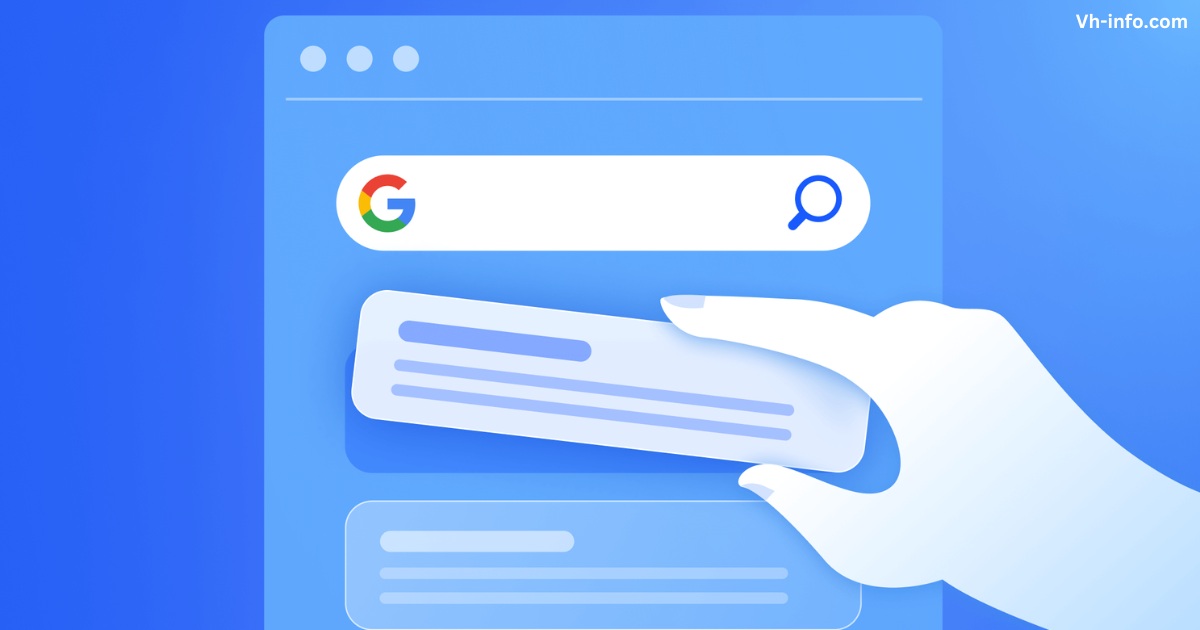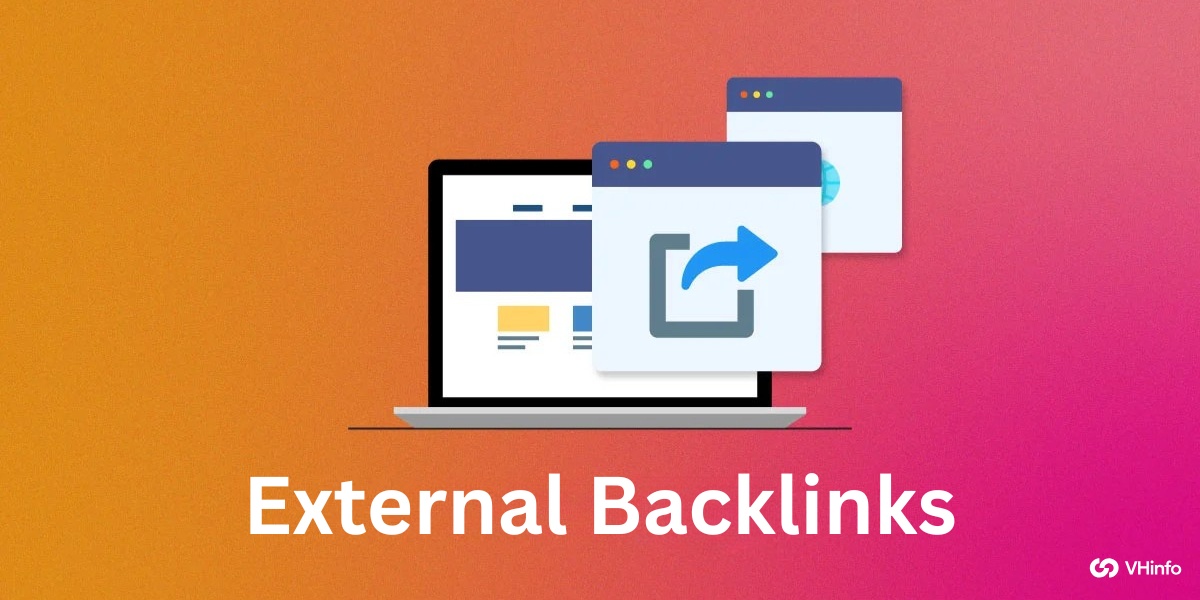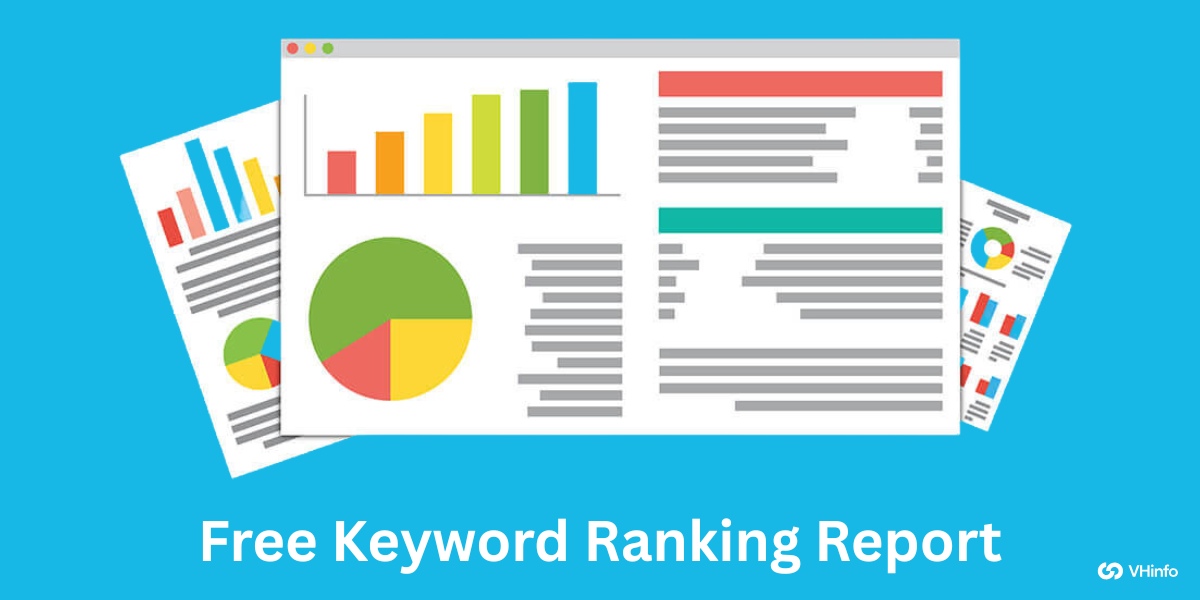As a SaaS company, you know the importance of driving organic traffic to your website through effective SEO strategies.
One important aspect of SEO that often gets overlooked is search intent. Understanding and optimizing your content for search intent can significantly improve your rankings, drive more qualified traffic, and ultimately boost conversions.
At VH Info, we specialize in helping SaaS businesses like yours build high-quality links and improve their online visibility.
In this comprehensive guide, we’ll dive deep into the concept of search intent, its importance in SEO, and how you can optimize your content to align with your target audience’s intent.
What is Search Intent?
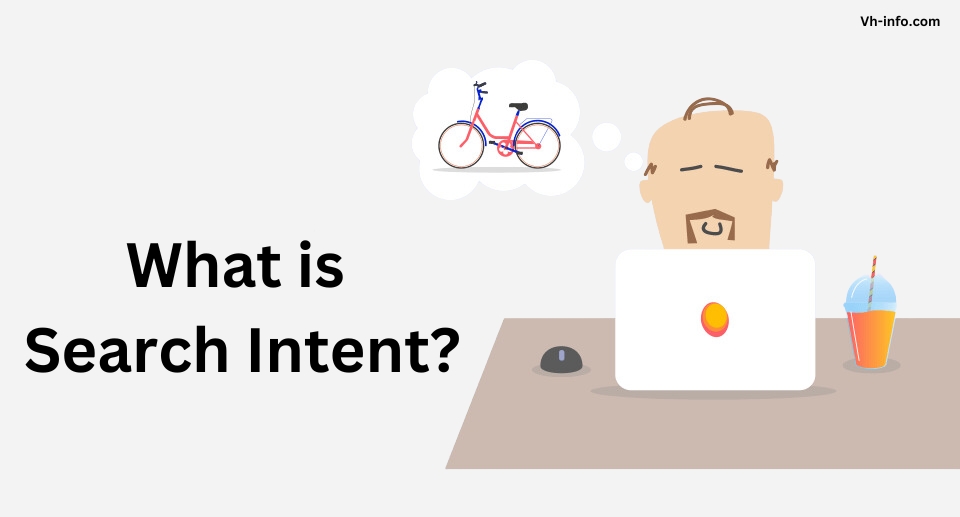
Search intent, also known as user intent or keyword intent, refers to the primary goal a user has when typing a query into a search engine. It’s the reason behind their search and what they expect to find in the search results.
What is Keyword Intent?
Keyword intent is essentially the same as search intent. It refers to the intent behind a specific keyword or phrase that a user types into a search engine. Understanding the intent behind keywords is important for creating content that meets the needs of your target audience.
Why is Search Intent Important in SEO?

Search intent has become increasingly important in SEO due to the evolution of search engines and their algorithms. Let’s take a closer look at how search engines have changed over the years.
The Evolution of Search Engines
In the early days of search engines, they relied heavily on keyword matching to determine the relevance of a webpage to a user’s query. However, this approach often led to irrelevant and low-quality results.
The Introduction of Panda, Penguin, and Hummingbird
To combat this issue, Google introduced several algorithm updates, including Panda, Penguin, and Hummingbird. These updates focused on improving the quality of search results by considering factors such as content quality, user experience, and the context of the query.
Keyword-Wise Vs. Semantic Search
With the introduction of semantic search, search engines now aim to understand the intent behind a user’s query rather than simply matching keywords. By analyzing the meaning and context of the query, search engines can provide more relevant and useful results to users.
How To Learn Your Audience’s Search Intent?

To optimize your content for search intent, you first need to understand your audience’s intent when they search for specific keywords or phrases. Here are some ways to learn your audience’s search intent:
- Analyze the search engine results pages (SERPs) for your target keywords and identify the types of content that rank well.
- Use tools like Google Analytics to see which pages on your site have the highest engagement and conversion rates.
- Use keyword research tools like Ahrefs or SEMrush to understand user search intent and understand different stages of the marketing funnel. This can help you a lot for ranking on the first page of google search results.
- Conduct surveys or interviews with your target audience to gain insights into their needs and expectations when searching for information related to your industry.
The Four Types of Search Intent
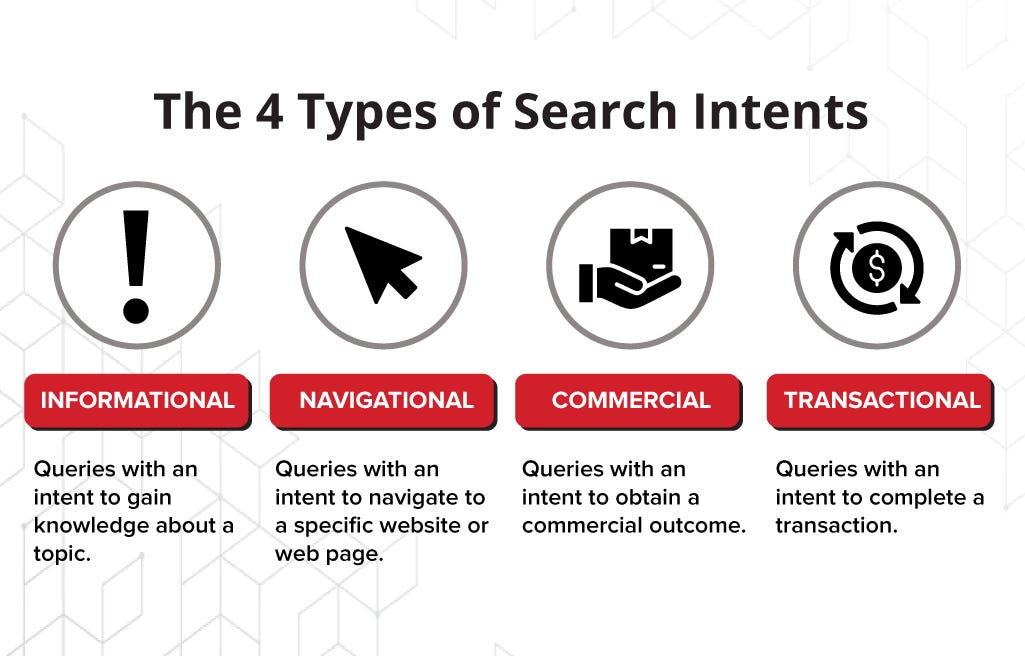
There are four main types of search intent that you should be aware of when optimizing your content:
- Navigational Search Intent: Navigational intent occurs when a user is looking for a specific website or webpage. For example, searching for “VH Info” with the intent to visit our website would be considered as a navigational query.
- Informational Search Intent: Informational intent is when a user is seeking information, answers, or knowledge on a particular topic. For example, searching for informational keywords like “what is link building” to learn about the concept.
- Commercial Search Intent: Commercial search intent happens when a user is researching products or services with the intention to purchase in the future. For example, searching for “best link building services” to compare options.
- Transactional Search Intent: Transactional search intent is when a user is ready to take a specific action, such as making a purchase or signing up for a service. For example, searching for “buy link building package” with the intent to make an immediate purchase.
How To Determine Keyword Search Intent?
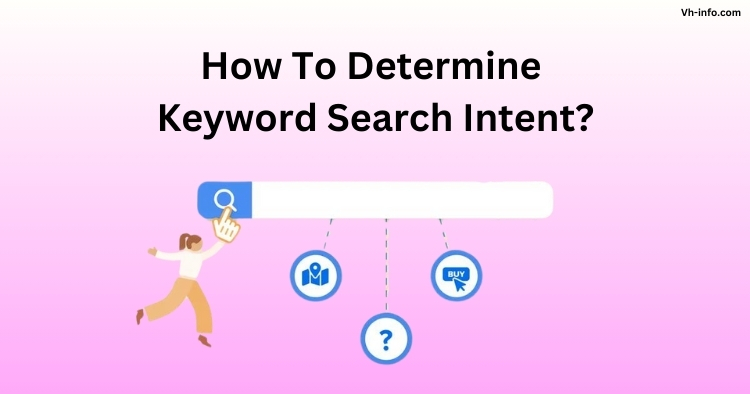
To determine the search intent behind a specific keyword, follow these steps:
Step 1: Examine the SERPs
Look at the top search results for your target keyword and analyze the types of content that are ranking well. Are they mostly informational blog posts, product pages, or landing pages? This is a great way and will give you an idea of the dominant search intent for that keyword.
Step 2: Use Google Ads To Determine the Extent of Commercial Intent
If you see a lot of ads in the search results for your target keyword, it’s a good indication that there is commercial intent behind the query. Users searching with commercial intent are more likely to click on ads and make a purchase.
Step 3: Analyze Your Analytics
Use tools like Google Analytics to see how users interact with your content. Look at metrics such as bounce rate, time on page, and conversion rate to gauge whether your content is meeting the user’s intent.
Which Type of Search Intent Should You Optimize For?

The type of search intent you should optimize for depends on your business goals and the stage of the buyer’s journey your target audience is in. Here are some general guidelines:
- If you want to drive brand awareness and establish thought leadership, focus on informational content that educates and informs your audience.
- If you want to attract potential customers who are considering your product or service, create commercial content that showcases your offerings and their benefits.
- If you want to drive conversions and sales, optimize for transactional intent by creating landing pages and product pages that make it easy for users to take action.
How to Find and Optimize For Search Intent?
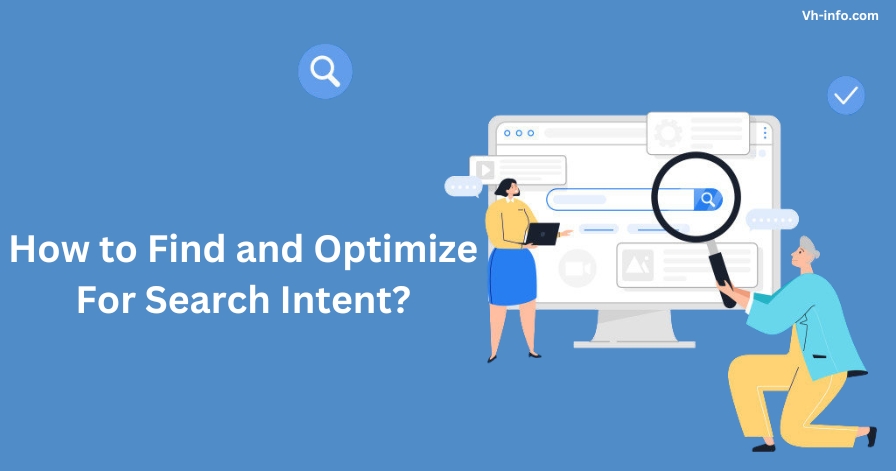
Step 1. Align Your Content With The “Three Cs of Search Intent”
To optimize your content for search intent, make sure it aligns with the “three Cs of search intent“:
- Content-Type: The content type should match the user’s expectations based on their search query. For example, if a user searches for “how to build links,” they expect to find a blog post or guide that provides step-by-step instructions.
- Content Format: The format of your content should also align with the search intent. For example, if a user searches for a “link-building checklist,” they expect to find a checklist-style article rather than a lengthy blog post.
- Content Angle: The angle or perspective of your content should match the user’s intent. For example, if a user searches for “link building for beginners,” they expect to find content that is tailored to novice-level readers.
Step 2. Find Subtopics to Cover in Your Content
To create comprehensive content that fully satisfies the user’s search intent, find relevant subtopics to cover in your article.
Here are two ways to do this:
- Visit the Top-Ranking Pages: Analyze the top-ranking pages for your target keyword and look for common subtopics or sections that they cover. This will give you an idea of what users expect to find in content that ranks well for that query.
- Run a Content Gap Analysis at the Page Level: Use tools like Ahrefs or SEMrush to run a content gap analysis at the page level. This will show you the keywords that your competitors’ pages are ranking for that your page is not. Use these insights to identify subtopics you may have missed.
How To Make Sure Your Client’s Content Aligns With the Search Intent?

As an SEO professional or content marketer, it’s important to ensure that your client’s content aligns with the search intent of their target audience. Here are some steps you can take:
- Determine Search Intent Match: Analyze the SERPs for your client’s target keywords and determine the dominant search intent. Make sure their content matches the intent of the top-ranking pages.
- Analyze Existing Content: Review your client’s existing content and assess whether it aligns with the search intent of their target keywords. Identify any gaps or opportunities for improvement.
- Optimize Content: Based on your analysis, optimize your client’s content to better match the search intent. This may involve updating the content type, format, or angle, as well as including relevant subtopics.
- Use Schema Markup: Implement schema markup on your client’s website to help search engines better understand the content and its relevance to specific search queries.
- Monitor Performance: Continuously monitor the performance of your client’s content using tools like Google Analytics and Search Console. Look for improvements in rankings, traffic, engagement, and conversions as indicators that your content is successfully meeting the search intent.
FAQ’s:
What is the Difference Between Keyword Intent and Search Intent?
Keyword intent and search intent are essentially the same concepts. They both refer to the primary goal or purpose behind a user’s search query. The terms are often used interchangeably in the SEO industry.
How Do I Find the Search Intent Behind a Keyword?
To find the search intent behind a keyword, analyze the SERPs for that keyword and look at the types of content that are ranking well. Also, consider using Google Ads to gauge the level of commercial intent and analyze your own website’s analytics to see how users interact with your content.
Can Search Intent Change Over Time?
Yes, search intent can change over time as user behavior and expectations evolve. It’s important to regularly review and update your content to ensure it continues to align with the current search intent for your target keywords.
How Does the Search Intent of Mobile Users Differ From Desktop Users?
Mobile users often have more immediate and location-based search intents compared to desktop users. They may be looking for quick answers, local businesses, or mobile-friendly content. When optimizing for search intent, consider the unique needs and behaviors of mobile users.
Conclusion
Understanding and optimizing for search intent is a critical component of a successful SEO strategy. By aligning your content with the primary goal behind a user’s search query, you can improve your rankings, drive more qualified traffic, and ultimately achieve better business results.
At VH Info, we’re committed to helping SaaS businesses like yours navigate the complex world of SEO and link building. By focusing on search intent and creating high-quality, relevant content, you can establish your brand as a trusted authority in your industry and attract more potential customers to your website.
Remember, the key to optimizing for search intent is to put yourself in the user’s shoes and create content that meets their needs and expectations. By following the tips and best practices outlined in this guide, you’ll be well on your way to creating a winning SEO strategy that drives long-term success for your business.
